Classroom Observation Report Samples
-
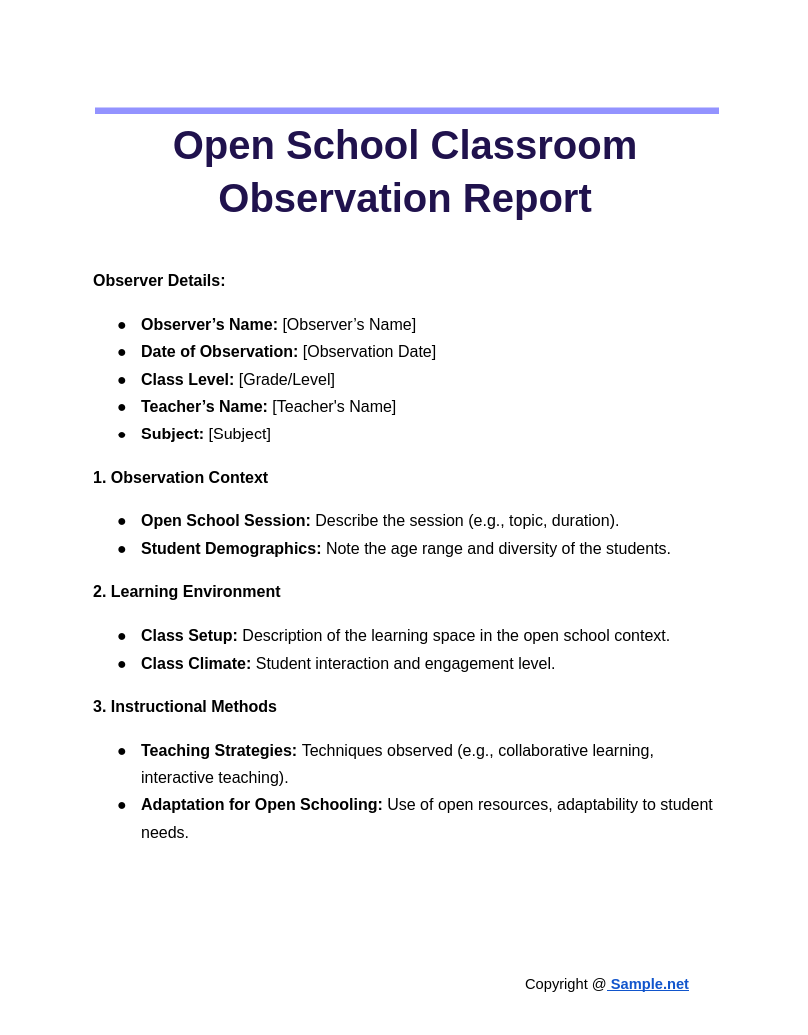
Open School Classroom Observation Report
download now -
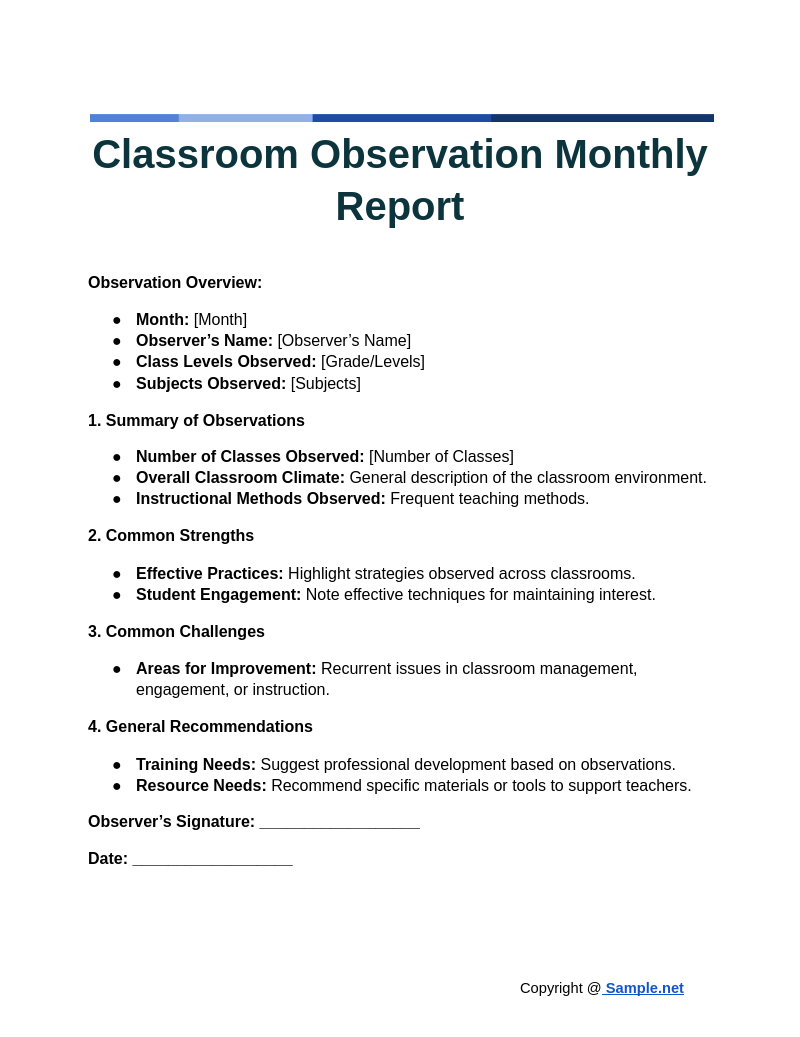
Classroom Observation Monthly Report
download now -
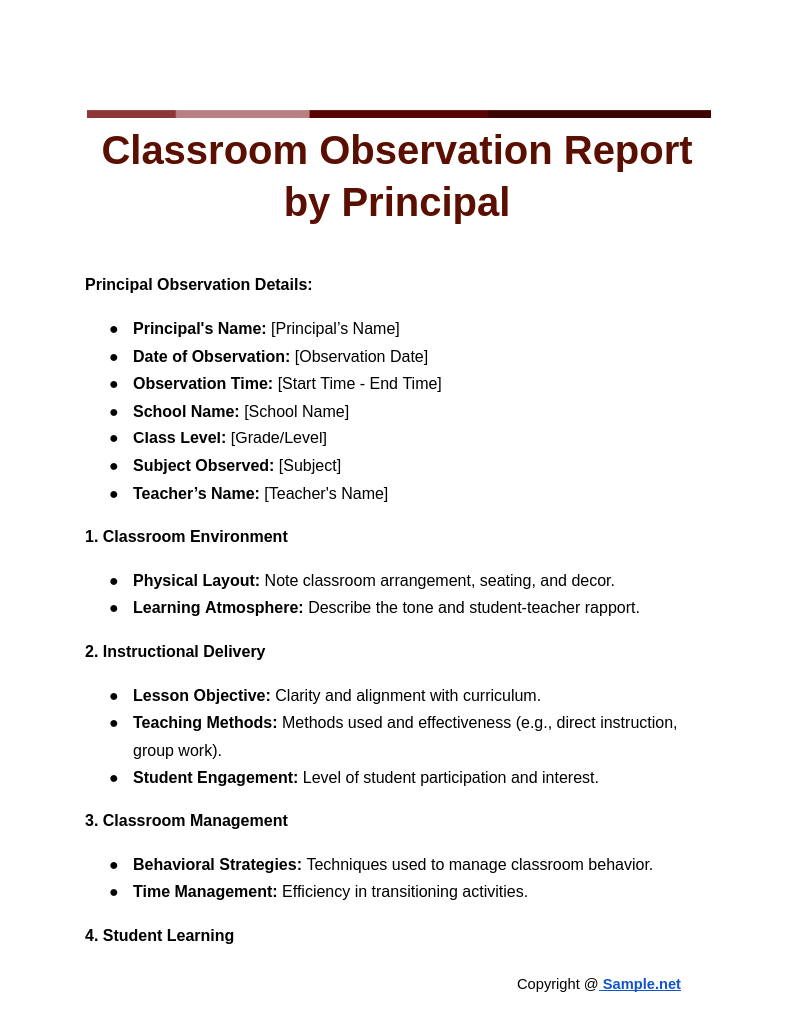
Classroom Observation Report by Principal
download now -
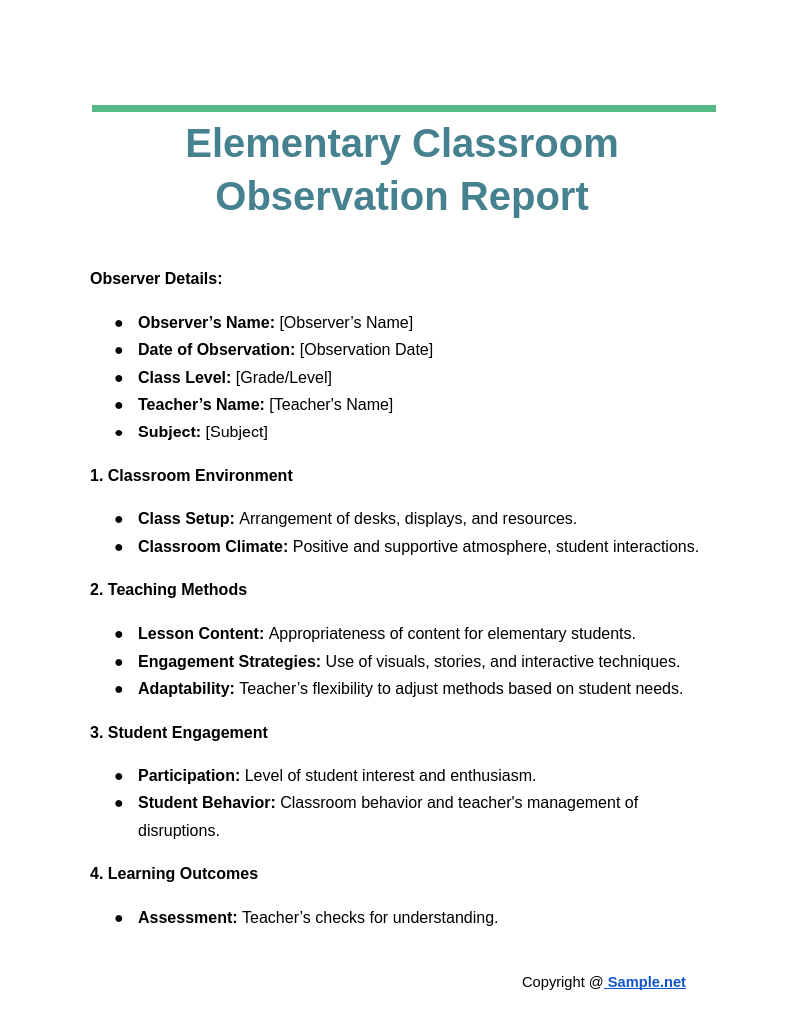
Elementary Classroom Observation Report
download now -
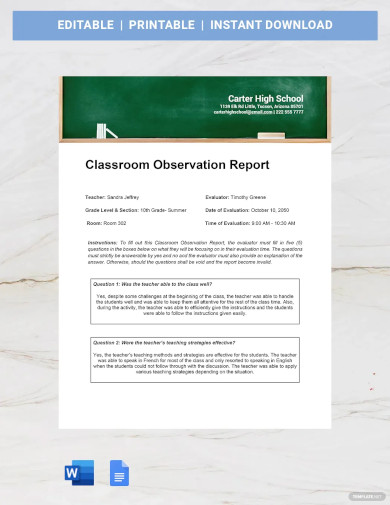
Classroom Observation Report Template
download now -
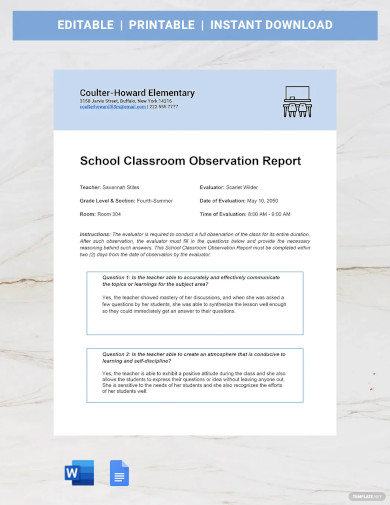
School Classroom Observation Report Template
download now -
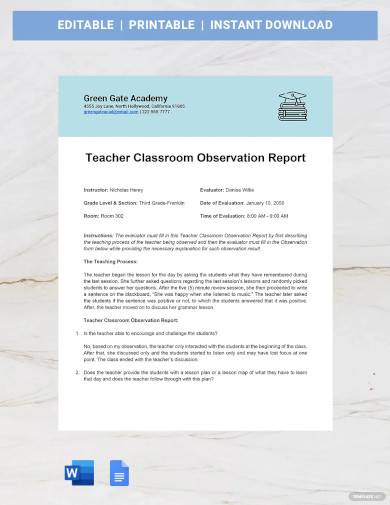
Teacher Classroom Observation Report Template
download now -
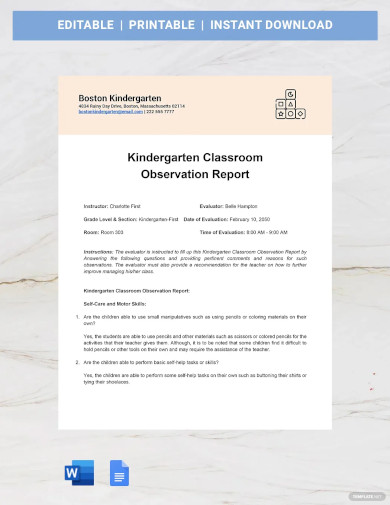
Kindergarten Classroom Observation Report Template
download now -

Preschool Classroom Observation Report Template
download now -
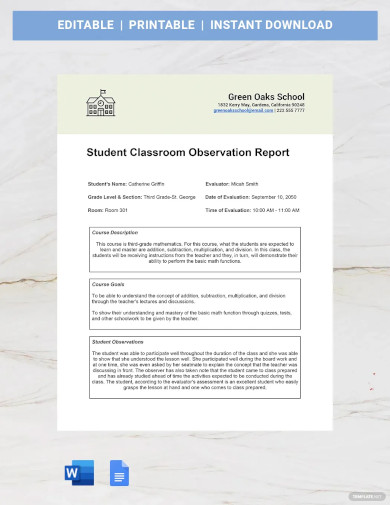
Student Classroom Observation Report Template
download now -
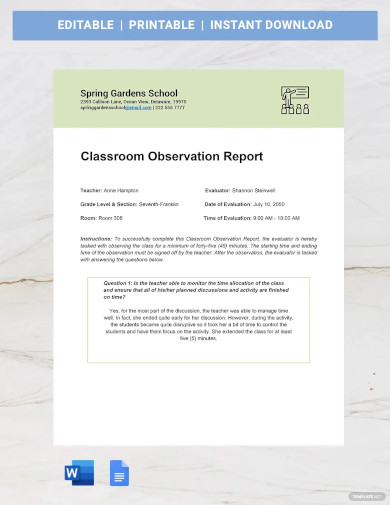
Free Sample Classroom Observation Report Template
download now -
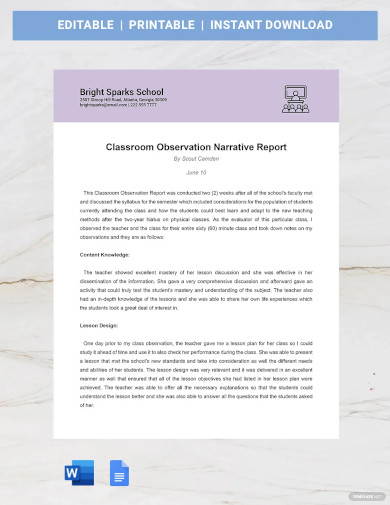
Classroom Observation Narrative Report Template
download now -
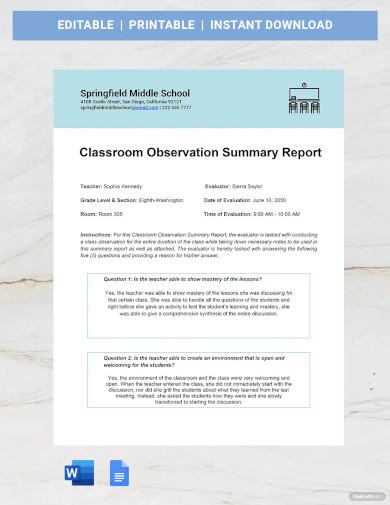
Classroom Observation Summary Report Template
download now -
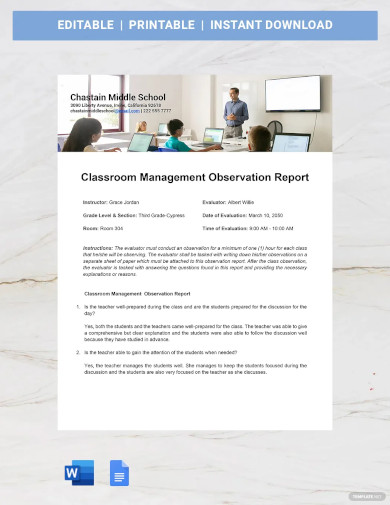
Classroom Management Observation Report Template
download now -

Classroom Observation Report
download now -
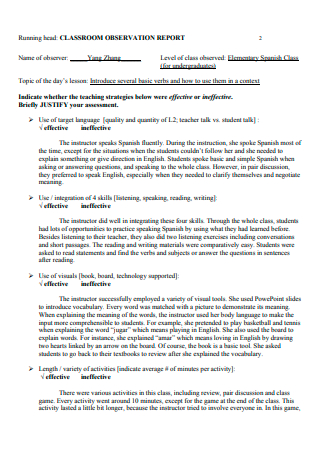
Basic Student Classroom Observation Report
download now -
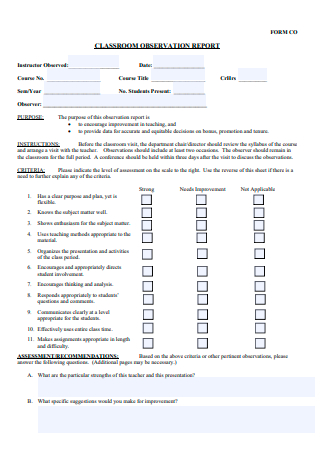
Formal Classroom Observation Report
download now -
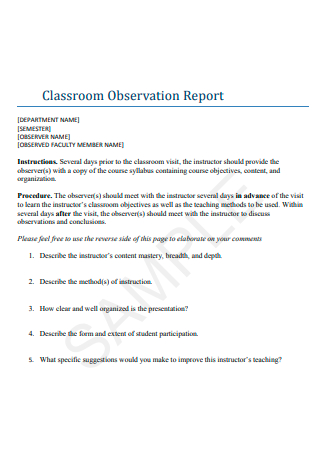
Sample School Classroom Observation Report
download now -
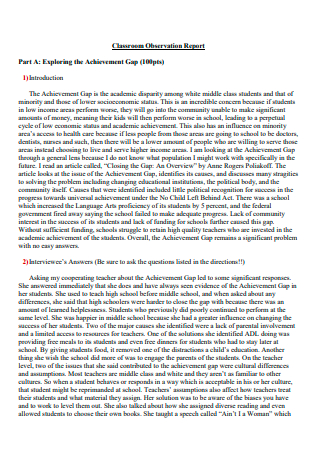
Classroom Special Education Observation Report in PDF
download now -
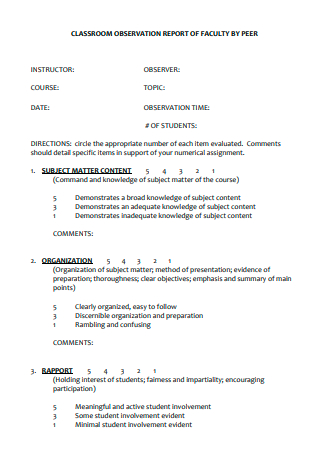
Faculty Classroom Writing Observation Report
download now -
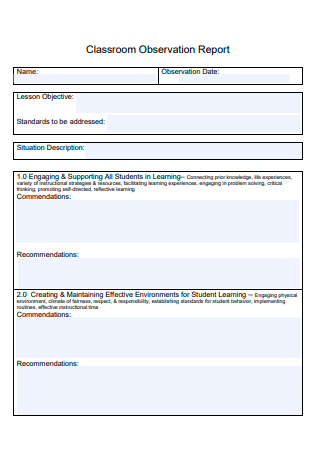
Simple Preschool Classroom Observation Report
download now -
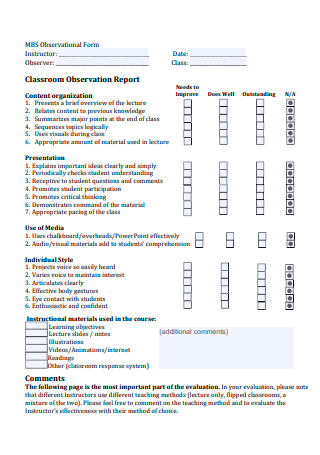
Essay on Classroom Observation Report Example
download now -

Classroom Observation Report Introduction Form
download now -
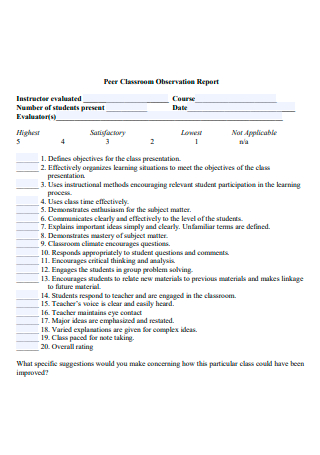
Printable Early Childhood Classroom Observation Report
download now -
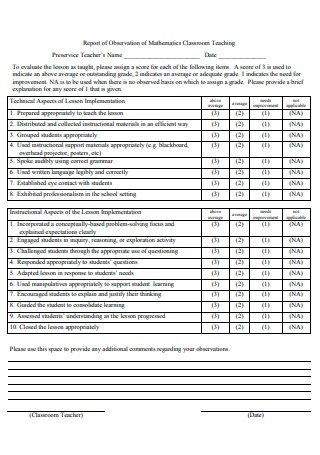
Mathematics Grade Teaching Observation Report
download now -
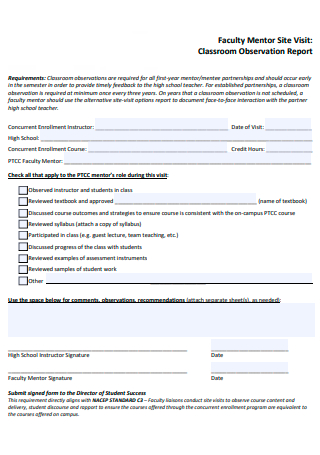
Faculty Mentor Narrative Classroom Observation Report
download now -

Classroom Observation Report Guidance Format
download now -
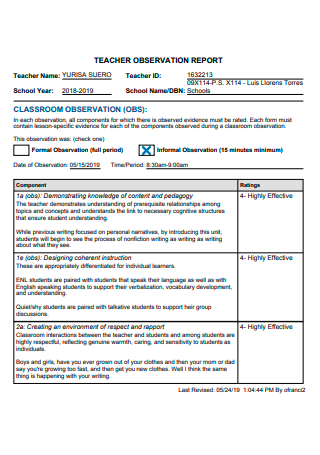
Teacher Classroom Observation Report
download now -
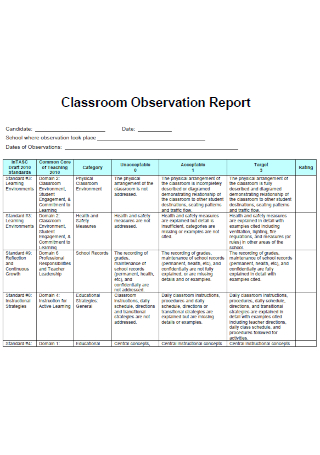
Standard Child Classroom Observation Report
download now -
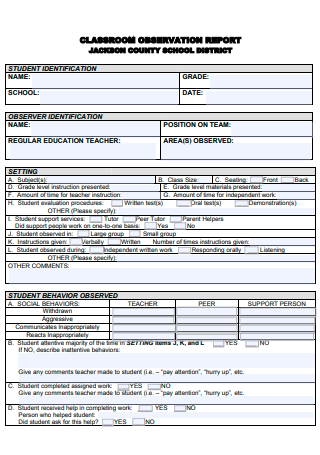
Draft Summary Classroom Observation Report
download now -
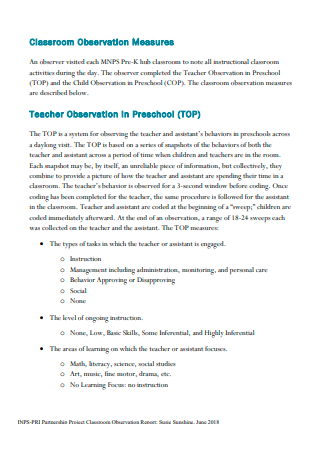
Partnership Project Classroom Observation Report
download now -
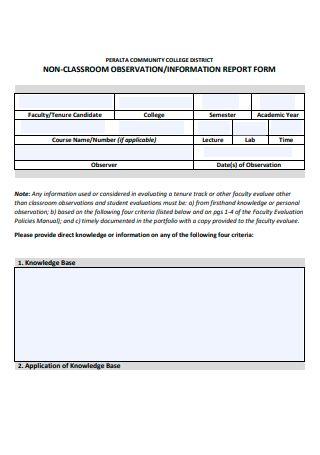
Peer Observation Observation Report Form
download now -
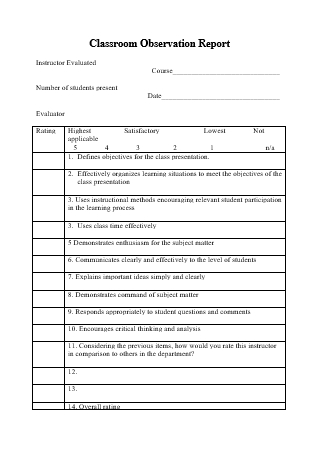
Classroom Observation Report Model
download now
FREE Classroom Observation Report s to Download
Classroom Observation Report Format
Classroom Observation Report Samples
What is a Classroom Observation Report?
Components of a Classroom Observation Report
How to Create a Classroom Observation Report?
FAQs
What is a lesson observation report?
What are the steps in classroom observations?
What is the purpose of conducting classroom observations?
How long should a typical Classroom Observation Report be?
What tools can be used to document classroom observations?
How should feedback be delivered after the observation?
What should be avoided in a Classroom Observation Report?
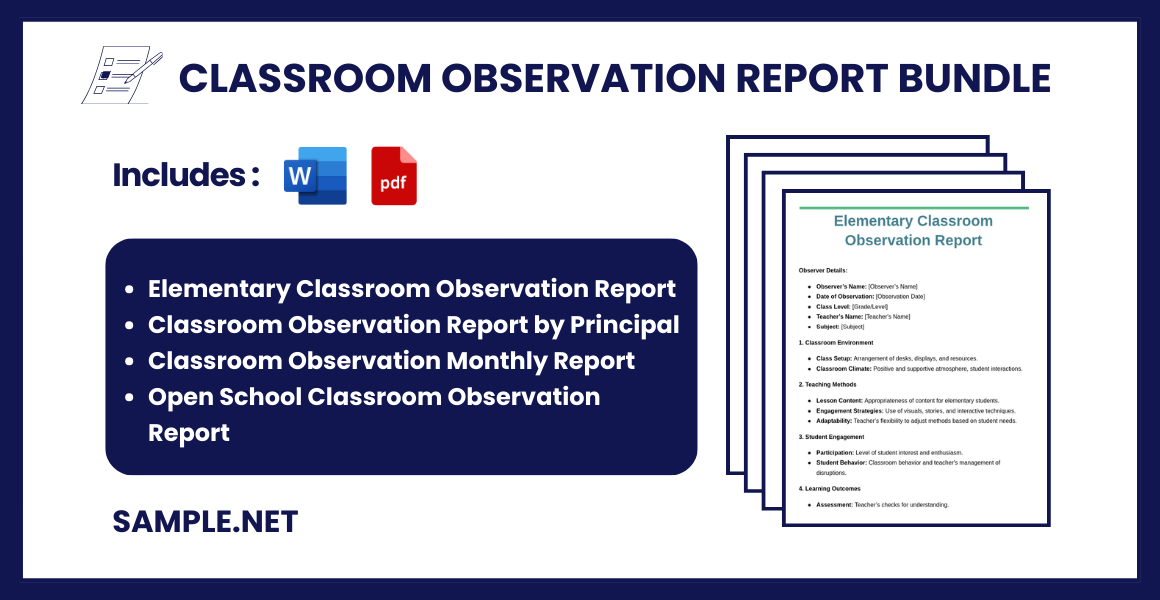
Download Classroom Observation Report Bundle
Classroom Observation Report Format
Observer Details:
- Observer Name: [Your Name]
- Date of Observation: [Observation Date]
- Observation Time: [Start Time – End Time]
- School Name: [School Name]
- Class Level: [Grade/Level]
- Subject Observed: [Subject]
- Teacher’s Name: [Teacher’s Name]
1. Classroom Environment
- Physical Setup:
- Describe the arrangement of desks, teacher’s position, use of whiteboard, etc.
- Mention classroom decor (posters, charts, etc.) and its relevance to the subject.
- Classroom Climate:
- Note the overall atmosphere (friendly, encouraging, disciplined).
- Include the student-teacher relationship and peer interactions.
2. Lesson Overview
- Lesson Topic: [Topic Covered]
- Lesson Objective: [Objective Stated]
- Specify whether objectives were clear to students.
- Note any learning outcomes highlighted.
- Instructional Materials Used:
- List materials such as textbooks, handouts, multimedia, etc.
- Mention how effectively they were used.
3. Teaching Strategies and Methods
- Instructional Methods Used:
- Detail specific teaching techniques (lecture, group work, interactive sessions).
- Mention any differentiated instruction observed for diverse learners.
- Teacher Engagement:
- Describe the teacher’s style (energetic, monotone, engaging).
- Include body language, eye contact, and use of voice modulation.
- Questioning Techniques:
- Note if questions were open-ended or closed.
- Observe if students were encouraged to ask questions.
4. Student Engagement
- Participation:
- Note the level of student involvement (active, passive, mixed).
- Highlight if participation was voluntary or prompted by the teacher.
- Student Response:
- Mention how students responded to questions and activities.
- Note the level of interest and enthusiasm in the lesson.
- Group Dynamics:
- Describe interactions among students during group tasks or discussions.
- Note any collaborative learning strategies used.
5. Classroom Management
- Behavior Management:
- Describe the teacher’s strategies for managing behavior.
- Mention how discipline issues were handled, if any.
- Time Management:
- Note the pacing of the lesson and adherence to schedule.
- Highlight transitions between different activities.
6. Assessment and Feedback
- Formative Assessment:
- Mention any assessment methods used during the lesson (quizzes, verbal checks).
- Note how feedback was provided (individual, group).
- Summative Assessment:
- If applicable, mention if any tests or exams were part of the lesson.
7. Overall Effectiveness
- Strengths Observed:
- Highlight what worked well during the lesson.
- Include effective strategies, engagement techniques, or materials.
- Areas for Improvement:
- Suggest strategies or techniques that could enhance teaching effectiveness.
- Mention specific areas like student engagement, content clarity, etc.
8. Observer’s Comments & Recommendations
- General Observations:
- Offer additional insights about the teaching session.
- Note any external factors that may have impacted the lesson.
- Recommendations:
- Provide constructive feedback with specific action points.
Observer’s Signature: __________________________
Date: __________________________
What is a Classroom Observation Report?
A Classroom Observation Report is a detailed account of classroom dynamics, focusing on teaching methods, student participation, and overall atmosphere. It aims to evaluate the effectiveness of instructional strategies and the engagement levels of students during lessons. You can also see more on Child Observation Report.
Components of a Classroom Observation Report
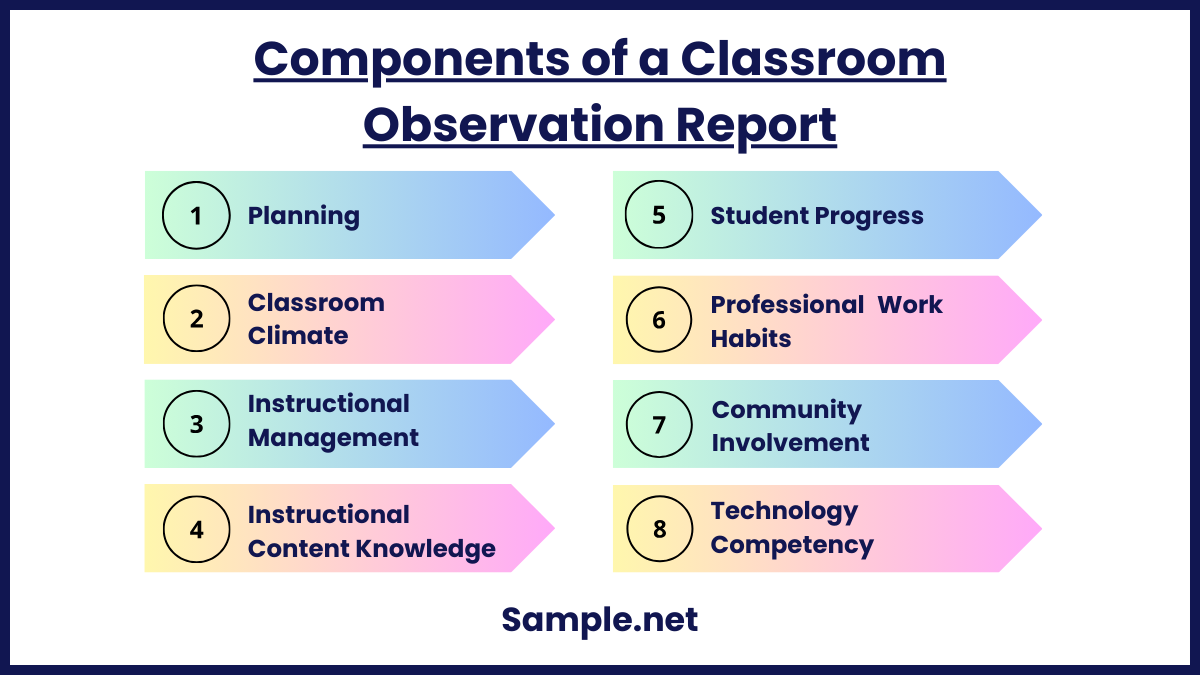
When it comes to a classroom observation report, it is necessary to have the necessary elements to ensure a fair and just procedure in creating the observation report. Each section has a criterion and comment section where the observer indicates their observations. The list below shows the components of a class observation report that teachers, administrators, or specialists use to measure the competencies and techniques of an instructor. You can also see more on Teachers Weekly Report.
How to Create a Classroom Observation Report?
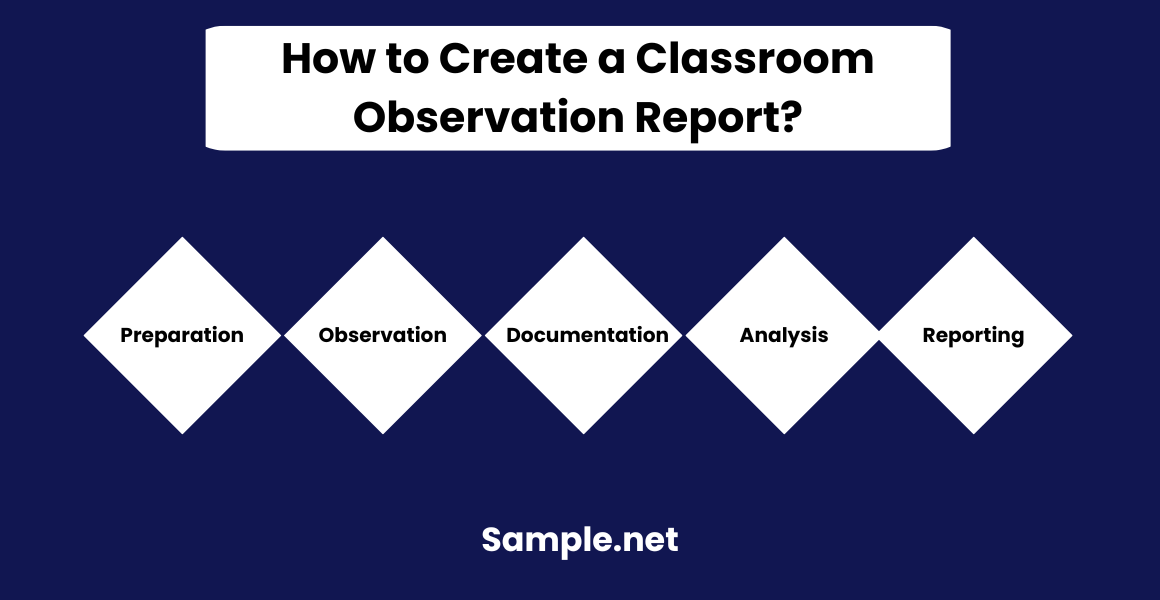
Step 1: Preparation
Begin by defining the objectives of your observation. Understand why the observation is being conducted—whether to evaluate teaching methods, student engagement, or classroom management. Next, select suitable observation tools, such as checklists or rating scales, to ensure consistency. Review the curriculum and lesson plan beforehand to grasp the context of the lesson. Familiarize yourself with the observation criteria, ensuring you know what to focus on during the observation. Finally, confirm the observation schedule with the teacher in advance to avoid disruptions.
Step 2: Observation
Enter the classroom quietly, ensuring you do not disrupt the ongoing lesson. Keep your focus on key aspects such as teaching strategies, student responses, and classroom management. Make sure to record observations systematically, noting teacher-student interactions, participation, and overall class dynamics. Maintain neutrality throughout the observation, setting aside personal biases. Use your selected observation tools to organize your notes and maintain structure in your findings. You can also see more on Teacher Incident Report.
Step 3: Documentation
Once the observation is complete, organize your notes into clear sections that reflect the classroom environment, teaching strategies, and student behaviors. Provide a comprehensive description of the lesson delivery, classroom setup, and any notable student-teacher interactions observed. Highlight strengths, areas needing improvement, and any significant outcomes. Include quantitative data when applicable, such as the number of students actively participating, to add more value to the report. Use objective language to maintain report accuracy and reliability.
Step 4: Analysis
Analyze the collected data, focusing on the effectiveness of teaching methods and student engagement levels. Examine classroom management strategies to understand how they contribute to maintaining order and discipline. Assess the overall learning atmosphere and student involvement to determine the success of the lesson. Compare your findings with established educational standards or goals to identify gaps or areas for development. Provide recommendations that can help improve teaching effectiveness and student learning outcomes. You can also see more on Work Sampling Summary Report.
Step 5: Reporting
Format the observation report into three main sections: introduction, body, and conclusion. Begin with an introductory section outlining the purpose of the observation. In the body, detail your findings, supported by evidence, data, and relevant observations. Conclude with a summary of the key findings, along with specific recommendations for improvement. Attach any supporting documents, such as data charts or observation sheets, to enhance the report’s credibility. Share the draft report with the teacher for feedback, finalize it based on their input, and submit it to the designated authorities.
Classroom observation reports are essential for understanding educational practices. They provide insights into teaching effectiveness, helping educators refine methods for better outcomes. By analyzing student engagement and teacher strategies, these reports contribute to creating more supportive and effective learning environments. You can also see more on School Survey Report.
FAQs
What is a lesson observation report?
A lesson observation report is another name for a classroom observation report. It is the practice of observing and assessing the teaching procedures, techniques, and quality to guarantee that students are receiving the highest and most effective learning experience the teacher and the institution can provide its students. You can also see more on Training Report.
What are the steps in classroom observations?
Classroom observations follow four essential steps. These activities involve pre-observation conferences, classroom observation, analysis and strategy sessions, and drafting the final report.
What is the purpose of conducting classroom observations?
The primary purpose of conducting classroom observations is to develop and improve student outcomes and student understanding through analyzing and promoting the instructional capabilities of the teacher. Another purpose it serves is to perform comprehensive investigations for possible inequities in giving instructions among different groups and types of students. Lastly, it provides researchers with information on current educational techniques and practices to identify and solve problems.
How long should a typical Classroom Observation Report be?
The length depends on the observation’s scope but generally ranges from 2 to 5 pages, covering observations, analysis, and recommendations in detail. You can also see more on Analytical Reports.
What tools can be used to document classroom observations?
Observers often use checklists, rating scales, digital apps, and detailed note-taking to ensure accurate and thorough documentation of observations.
How should feedback be delivered after the observation?
Feedback should be constructive, specific, and supportive, emphasizing strengths first and then suggesting areas for improvement with practical solutions.
What should be avoided in a Classroom Observation Report?
Avoid vague comments, personal biases, and criticism that is not backed by specific examples or observations. You can also see more on Narrative Report.
